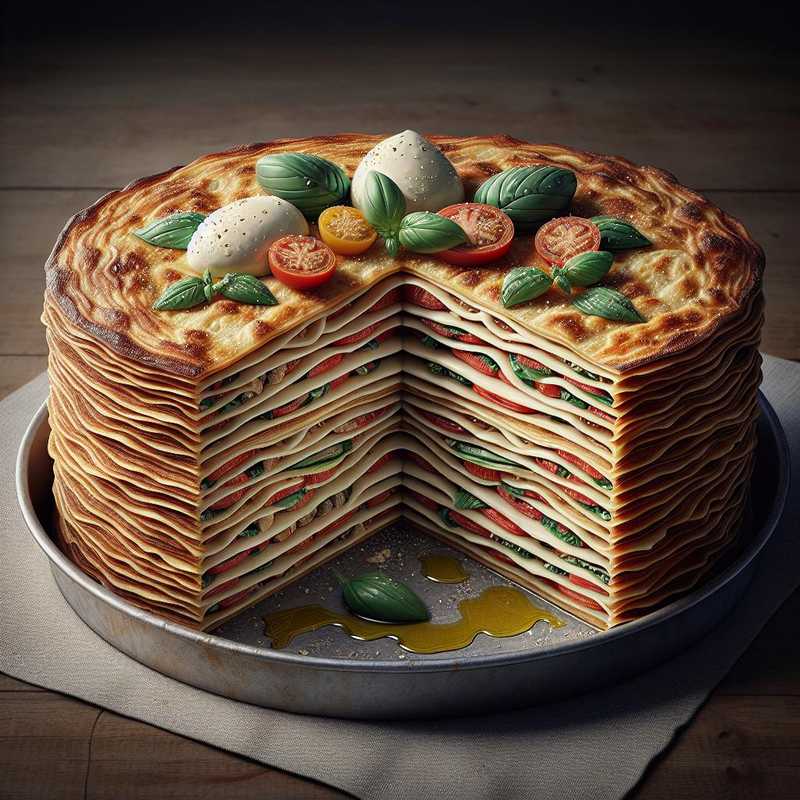Carasau Bread Millefeuille
17/11/2023The Carasau bread millefeuille is a dish that plays with the crispness of the typical Sardinian bread and the layering of ingredients that can be personalized according to your taste. Here is the classic version with tomatoes and cheese, but remember that you can vary the layers with whatever you prefer or have available.
Ingredients
- Carasau bread (quantity at will, but plan for at least 3-4 sheets per serving)
- Ripe tomatoes (2-3 depending on size)
- Cheese like mozzarella or stracciatella (200-300g)
- Fresh basil (any other fresh aromatic herb if you prefer)
- Extra virgin olive oil
- Salt and pepper to taste
- Oregano (optional)
Naturally, you can enrich it further with ingredients such as arugula, olives, artichokes, or an addition of pesto or tapenade.
Preparation
- Preheat the oven to 180°C.
- Prepare the tomatoes by washing and slicing them. If you prefer, you can also blanch them for a minute in boiling water and then peel them.
- Cut the cheese into slices or shred it, if you are using stracciatella.
- Take a sheet of Carasau bread and lightly wet it with water to make it more pliable. Then, place it on a baking sheet lined with parchment paper.
- On the bread, arrange a layer of tomato slices, then some cheese and torn basil or other aromatic herbs of your choice. Drizzle with oil, a pinch of salt and pepper, and if you like, some oregano.
- Repeat the procedure with other sheets of Carasau bread, stacking the layers on top of each other.
- Finish the last layer with a touch of cheese and a sprinkling of herbs.
- Bake the Carasau bread millefeuille for about 5-10 minutes, or until the cheese has melted and is lightly golden.
- Remove from the oven and let it rest for a minute before cutting it with a sharp knife or a pizza wheel.
Curiosity
Carasau bread, also known as “music paper” for its thinness, has very ancient origins and comes from Sardinia. It was traditionally baked twice to ensure long-term preservation, perfect for shepherds during long periods of transhumance. Its versatility makes it the star of many recipes, both sweet and savory, allowing for numerous culinary experiments.
